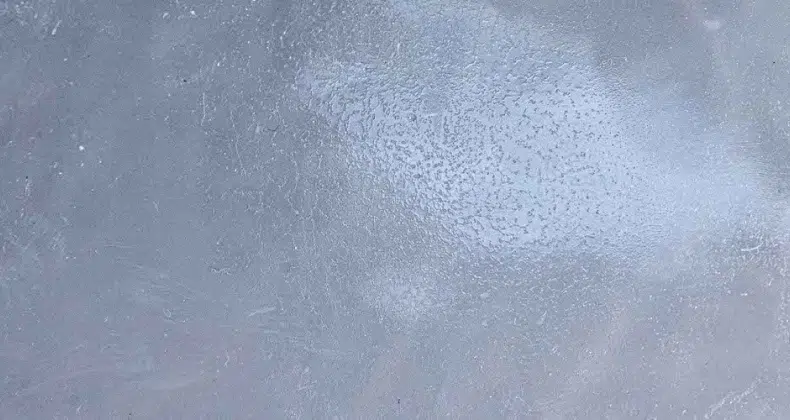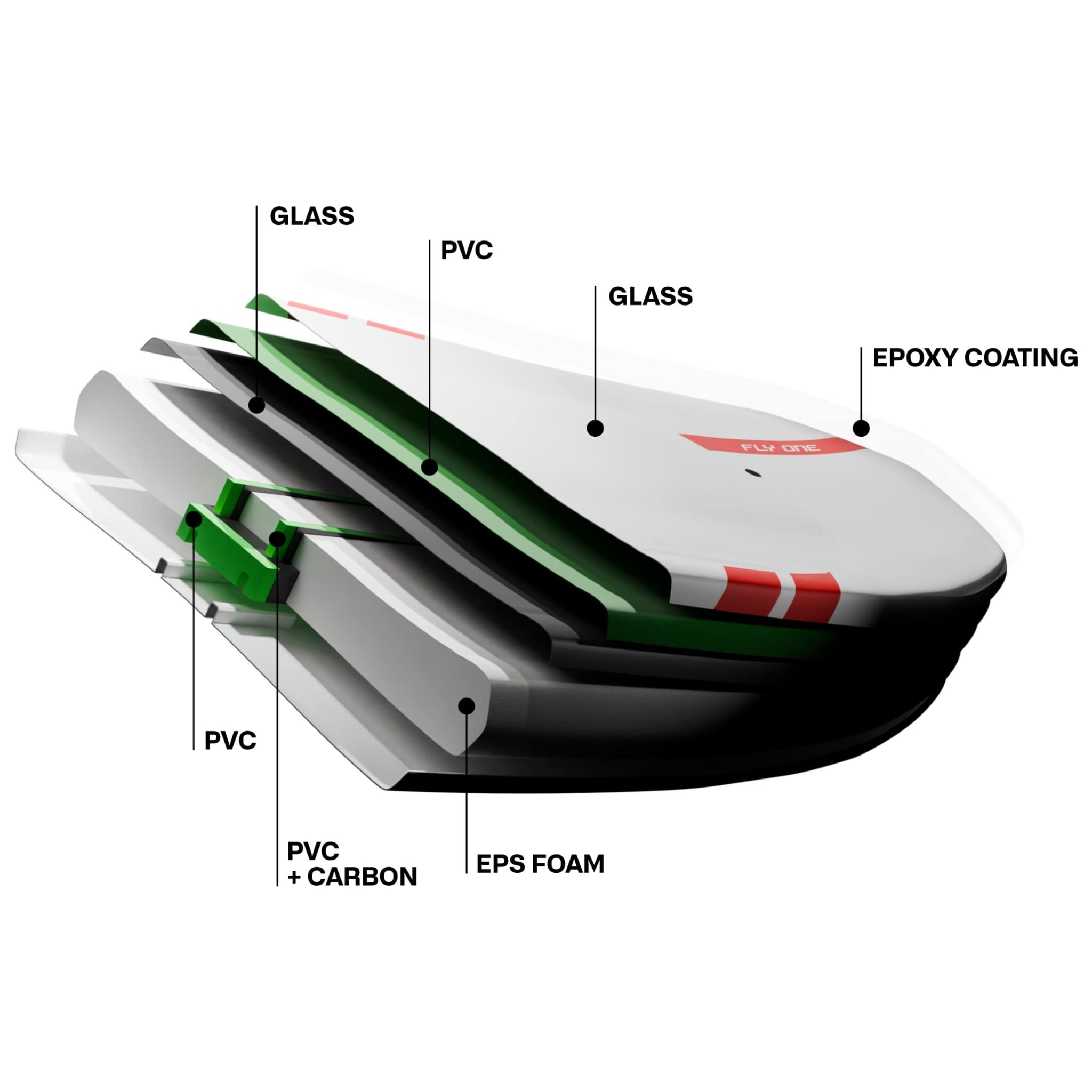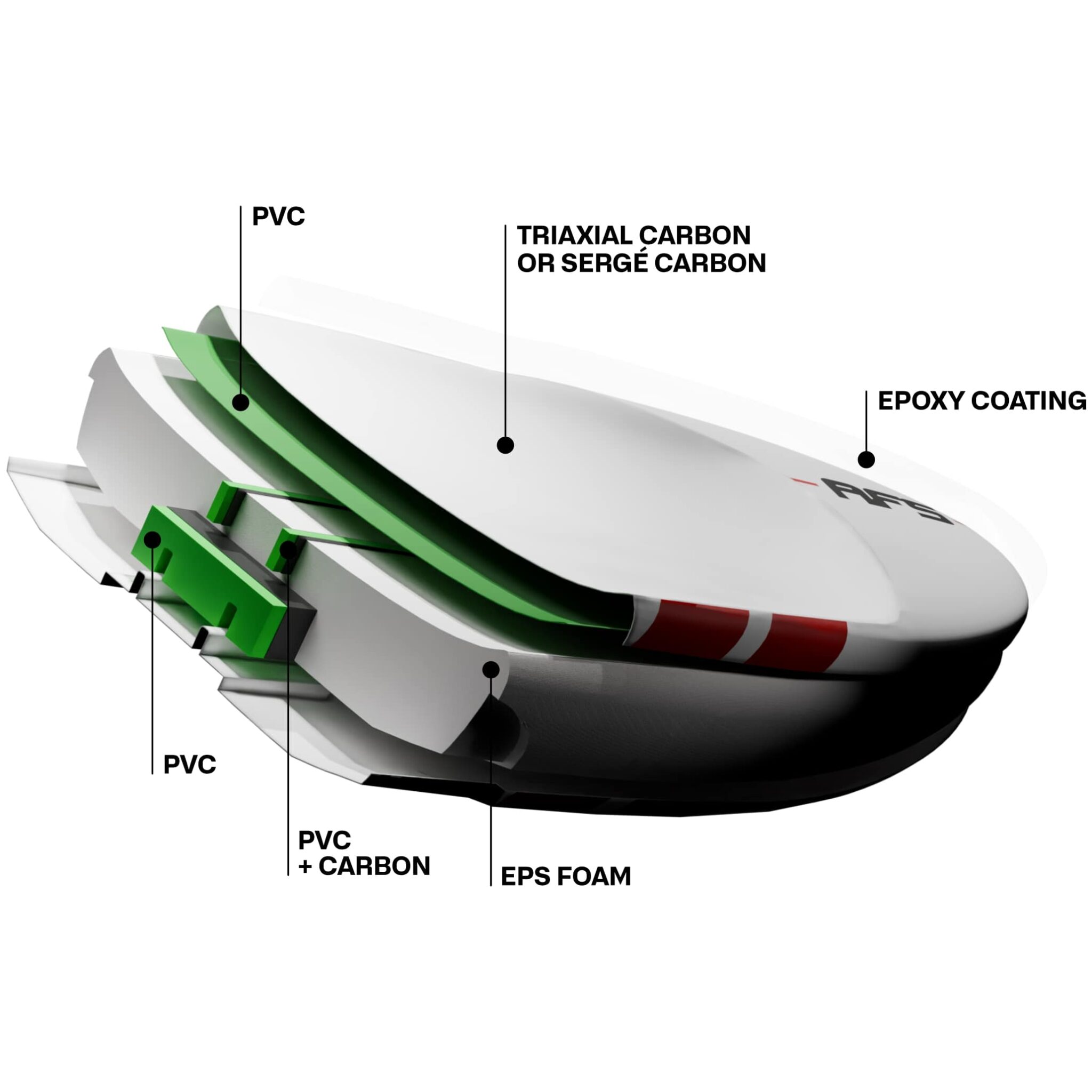Tablas AFS y AFS Advanced construcción
Al construir una tabla, la receta es siempre la misma; lo que cambian son los ingredientes. Una tabla se compone de varios elementos esenciales: la espuma, la carcasa exterior, los refuerzos y los tacos.
Al construir una tabla, la receta es siempre la misma; lo que cambian son los ingredientes. Una tabla se compone de varios elementos esenciales: la espuma, la carcasa exterior, los refuerzos y los tacos.
El proceso de fabricación suele ser el mismo: se da forma a un núcleo de espuma de baja densidad (EPS) y luego se envuelve en una carcasa rígida.
Lo que cambia las propiedades de la tabla son los materiales utilizados y el orden en que están colocados. Aquí los distintos materiales que pueden encontrarse en una tabla:
Se trata de una espuma de baja densidad variable que constituye el núcleo de la tabla, también llamado foam blank. Proporciona rigidez y flotabilidad a la tabla sin dejar de ser ligera. La densidad de la espuma influye considerablemente en el peso final de la tabla.

La fibra de vidrio es un material resistente que permite construir tablas duraderas. Es más densa y menos rígida que el carbono, pero es mucho más asequible, lo que la convierte en una ventaja para la construcción de tablas rígidas y asequibles económicamente.

La relación rigidez/densidad de este material lo convierte en uno de los más utilizados en la construcción de alto rendimiento en todo el mundo. Puede utilizarse para toda la estructura exterior de la tabla o simplemente como refuerzo en zonas estratégicas. Existen varios grados de rigidez del carbono, que permiten superar los límites del deslizamiento al tiempo que garantizan la rigidez y la capacidad de respuesta del equipo.

Esta espuma de PVC suele ser cuatro veces más densa que el núcleo de EPS. Se presenta en láminas de distintos grosores en función de su uso (cubierta, US Box, etc.). La combinación de esta espuma de PVC con fibra de vidrio o tejido de carbono forma un material tipo sándwich. Se adapta a la forma del núcleo para reforzarlo y darle rigidez, garantizando al mismo tiempo una ligereza máxima.

Junta todos los elementos y garantiza la impermeabilidad de la tabla.

Profundicemos un poco más en la construcción de las tablas:
El núcleo constituye la base de la tabla. Existe una relación directa entre la elección de la densidad y la construcción a su alrededor en función del peso final deseado del producto. Cuanto más densa sea la espuma utilizada, más pesada pero más resistente será a la compresión y a los impactos. Una espuma más densa (más pesada pero más resistente) permite una carcasa más ligera con materiales más rígidos como el carbono.
Es una cuestión de equilibrio y compromiso en función de lo que se espera del producto final. Aquí es donde entra en juego el concepto de construcción en sándwich.
En primer lugar, la estructura sándwich ofrece una gran resistencia a los impactos y da por resultado construcciones duraderas.
En las construcciones sándwich de PVC, el principio consiste en encerrar láminas de PVC entre varias capas de vidrio o carbono para beneficiarse de las propiedades mecánicas de las fibras al tiempo que se limita el peso, garantizando así una resistencia inigualable. La estructura de vidrio sándwich de PVC ofrece una gran resistencia a los impactos y al rozamiento. Es adecuada para todos los niveles de práctica, desde principiantes hasta avanzados. Se trata de tablas versátiles y duraderas, que ofrecen una excelente relación calidad-precio.

Sigue el mismo proceso de construcción que el sándwich de PVC Fibra de vidrio, con la aportación de refuerzos de carbono en determinadas zonas en función del uso previsto de la tabla. La densidad del núcleo también puede variar para conseguir tablas ligeramente más ligeras. Es un compromiso ideal para tener una tabla bastante ligera y resistente: un núcleo de baja densidad y una construcción de sándwich de vidrio con refuerzo de carbono adicional. En AFS, la Whitebird es la que mejor representa este tipo de construcción. La construcción PVC Sandwich Glass Carbon es especialmente adecuada para los riders que buscan una tabla de alto rendimiento, ligera y duradera a un precio asequible.
En esta construcción se siguen utilizando el proceso de fabricación en sándwich PVC fibra vidrio, pero con tejido de carbono. A cada lado del núcleo de EPS se aplica un tejido multidireccional de fibra de carbono. Este material, conocido por su relación rigidez/densidad, refuerza la tabla al tiempo que optimiza su peso. Esta técnica permite optimizar la distribución de las fuerzas en la tabla, mejorando así su rigidez en todas las direcciones y su capacidad de respuesta global.

El carbono triaxial es un tejido de fibra de carbono de tres ejes diferentes, que ofrece una resistencia y rigidez excepcionales con un peso mínimo. En este tipo de construcción, optamos por utilizar un núcleo de EPS más denso de lo habitual. Para garantizar una tabla ligera, resistente y rígida, en las zonas de los pies de la cubierta y alrededor de las cajas de los raíles US se ha colocado un refuerzo en sándwich de carbono/PVC. Además, los refuerzos de carbono a lo largo de la tabla proporcionan una mayor capacidad de respuesta. Estos elementos técnicos combinados forman un compromiso que maximiza la ligereza, resistencia y rigidez de nuestras tablas.

La fabricación de un tabla en Carbono Triaxial es un proceso complejo y meticuloso que requiere conocimientos artesanales y tecnologías avanzadas, por lo que esta tecnología de fabricación se implementa en las mismas instalaciones donde fabricamos los foils en Francia.
Entrega en 24/48h
Pago a plazos al 0% de interés
Atención Personalizada Tel. 653 388 652
Devoluciones 14 días
2 a 3 años de garantía
Click & Collect en Figueres
Foil and Co., All rights are reserved. ©2024